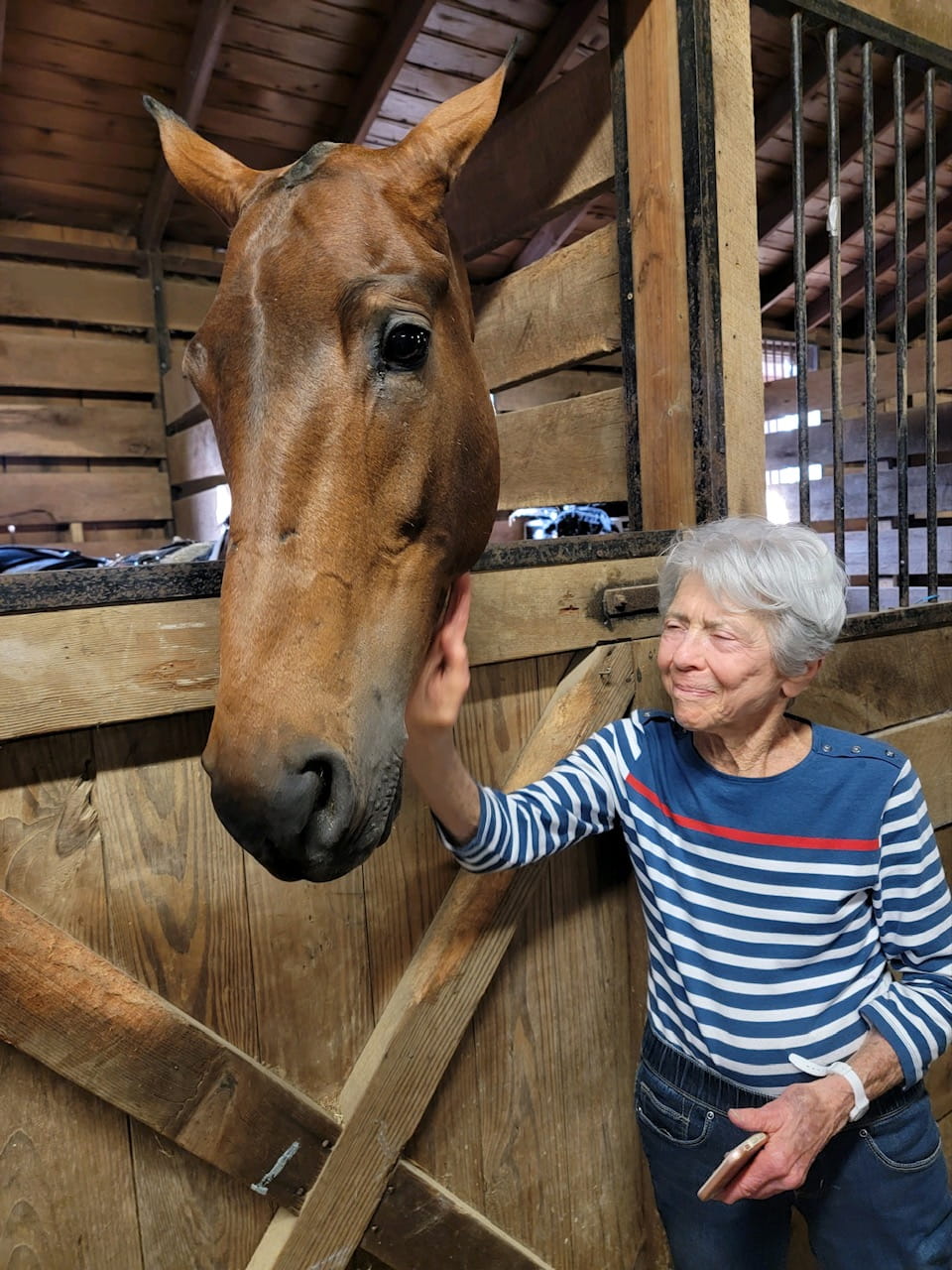Stent procedure restores blood flow to her legs and joy to her life

At 89, Ellen Aiello is a widowed mother of three and grandmother of four who lives independently and has a vibrant, active life. She enjoys cooking for friends, taking neighbors food shopping and organizing get-togethers at her apartment building in Montgomery County, Pennsylvania.
But two years ago, Ellen had a series of cardiovascular issues that challenged her independence. After experiencing recurrent pain in her left calf, she was diagnosed with peripheral artery disease (PAD), a buildup of plaque in the arteries that slows or obstructs blood flow to the limbs. She was successfully treated with a stent in her peripheral artery to open the blockage.
Shortly after, Ellen also had transcatheter aortic valve replacement (TAVR) surgery at Lankenau Medical Center, part of Main Line Health. A pre-surgical CT scan of Ellen’s abdomen and legs revealed major blockages in both her right and left common iliac arteries — the vessels on each side of the body that carry blood to the pelvic region and legs.
Despite these blockages, she was able to have the TAVR procedure. Her surgical team had to approach Ellen’s heart through a catheter (thin tube) in her arm instead of the groin, which is the typical point of entry.
After recovering from her aortic valve replacement, Ellen was able to quickly resume her activities. That’s when her leg pain came back — this time in both legs.
Pain and difficulty walking
Ellen was now feeling pain in both of her calves and thighs when she walked, as well as back pain and balance difficulties — issues that would continue to worsen over next two years. She tried exercise and physical therapy, but neither helped. Ellen even consulted an orthopaedic surgeon at a leading medical center to see if her difficulty walking was caused by a spinal issue. Although she did have significant spinal stenosis, it was not felt to warrant surgery.
"They said there was nothing they could do for me," she said.
Ellen went back to her cardiologist at Bryn Mawr Hospital, Laura Immordino, MD, who knew of the blockages in her legs that were discovered just before her TAVR procedure. The main concern at that time was her heart valve — blockages in the legs don’t need to be fixed unless they are causing problems.
"At that time, she complained of an ‘awareness’ of her breathing that was limiting her activity. She knew something was wrong but had a hard time explaining what," says Dr Immordino. "She was having to stop to rest after two minutes of walking — something that may not be unusual in an 89-year-old. However, knowing that she was previously very active for her age, this was clearly a change and something that warranted further investigation. Upon further questioning, it seemed that the leg pain was causing her breathing issues and her biggest underlying issue."
Dr. Immordino ordered an arterial duplex ultrasound, a noninvasive test that uses sound waves to map the arteries in the legs and identify any narrowing of the blood vessels. Doppler, a specific type of ultrasound, measured the speed of blood flow in Ellen’s legs.
The results were abnormal and different than in 2021. Dr. Immordino asked her colleague Manju Jayanna, MD, MS, an interventional cardiologist at Bryn Mawr Hospital, to review Ellen’s case.

Restoring hope
Long walks had been a daily part of Ellen’s life, but as her pain and fatigue increased, she had to give them up. Then, she received an unexpected phone call.
"Dr. Jayanna called me and said, ‘I’d like to talk with you. I think I can help you.’" Ellen said.
Based on Ellen’s CT scan from 2021 and the more recent duplex ultrasound, Dr. Jayanna thought she was an excellent candidate for an iliac artery revascularization — a minimally invasive treatment that uses endovascular stents to restore blood flow. He invited Ellen to his office.
"The first thing he did after greeting me was say, ‘Let’s go for a walk. Let’s see what’s happening with your legs,’" Ellen recalled.
After a brief walk in the hallway, Dr. Jayanna explained why Ellen was experiencing pain and how he wanted to treat it.
"I was able to determine that her symptoms were because of significant blockages to the blood supply to both of her legs. The site of obstruction in the arteries was in the lower abdomen, where the aorta (the main blood vessel from the heart) branches into two arteries supplying the legs," Dr. Jayanna said. Ellen’s blockages (the source of her pain) were just after that dividing point, one on each side.
Many physicians treat iliac artery blockages with open surgery, a more invasive approach that involves greater risk and a longer recovery time. For older patients like Ellen, that risk would have been too high.
The treatment Dr. Jayanna proposed required no anesthesia or incisions — just local numbing and two tiny pinholes made in the groin through which stents would be placed in her iliac arteries, with no external stitches or scarring.
Dr. Jayanna planned and performed the procedure with Eric Gnall, DO, FACC, an interventional cardiologist, who was a key member of Ellen’s TAVR team. The doctors consulted the original CT scan, which allowed them to match the size of Ellen’s blood vessels to the exact size stents they’d need to open the blockages.
During the procedure, they relied on fluoroscopy (real-time imaging) to guide them in placing the stents, which were coated with a special material to prevent blood leakage — a risk in older patients. Ellen was awake and comfortable the entire time and needed only an overnight stay in the hospital.
A dramatic improvement
The morning after her procedure, Ellen noticed an immediate change.
"From the moment I stood on my feet, I could tell the difference in my legs. I had forgotten what normal legs felt like — light and able. I went home and slowly started to walk again," Ellen said.
Dr. Jayanna said Ellen still has a blockage in her thigh that doesn’t need to be addressed, since it’s not causing problems, but having PAD does put her at higher risk for heart attack or stroke. She’ll have to continue seeing her cardiologist, managing her cholesterol and blood pressure and exercising regularly to reduce her risk.
Today, Ellen walks daily and does physical therapy to rebuild her strength. No longer fearful of traveling and having her legs give out, she recently spent a weekend with her daughter in the Poconos and described the "pure joy" of going on a mile-long hike.
She’s also happily back to taking friends to the grocery store.
"I feel like I can still be of use in this world to myself and others," she said.
Next steps:
Make an appointment with Manju Jayanna, MD, MS
Learn about heart and vascular care at Main Line Health
Learn more about peripheral arterial disease (PAD)
Keeping your legs healthy
 Content you want, delivered to your inbox
Content you want, delivered to your inbox
Want to get the latest health and wellness articles delivered right to your inbox?
Subscribe to the Well Ahead Newsletter.
